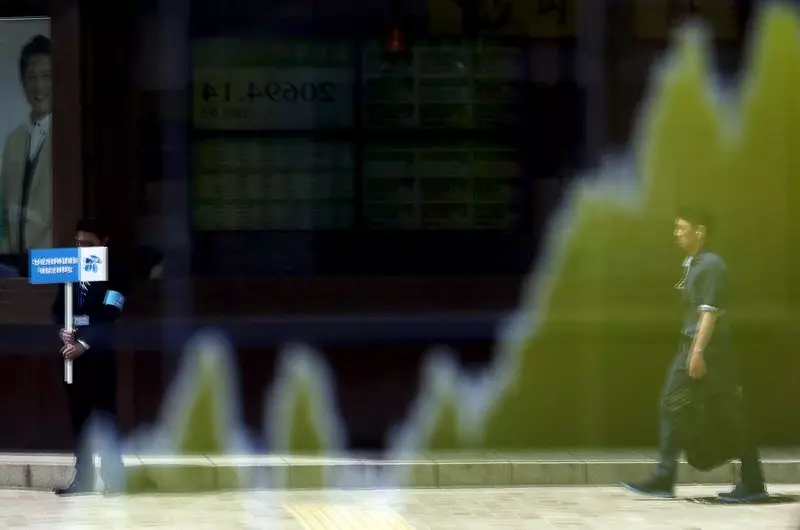On Thursday, various Asian stock indices exhibited mixed performance, responding to the impact of an unexpected interest rate cut by the Federal Reserve. Investors globally have remained cautious as they navigate the broader implications of this financial maneuver. While an aggressive 50 basis point cut seemed attractive for market participants, the Fed’s concurrently elevated neutral rate projections raised eyebrows amongst analysts and traders alike. This juxtaposition of the Federal Reserve’s actions suggests a complex economic landscape, where growth aspirations may run headlong into the realities of inflation and market dynamics.
Japan’s markets, notably the Nikkei 225 and TOPIX indexes, soared, outpacing other regional markets by notable margins of 2% to 2.8%. Such gains can be partly attributed to the weakening yen, which has become a focal point for investors in advance of an upcoming Bank of Japan (BOJ) meeting. With the yen depreciating significantly following the Fed’s announcements, domestic equities found a springboard for growth. The depreciation underscores the pressures the yen faces amidst a robust US dollar, illustrating the broader implications of foreign monetary policy on domestic markets.
Moreover, the anticipation surrounding the BOJ’s monetary policy decisions reflects an environment of ambiguity. Market participants are alert to potential interest rate hikes as inflationary trends gain momentum in Japan. The forthcoming consumer inflation statistics promise to shed more light on this complex interplay between monetary policy and economic growth, which is particularly crucial in the Japanese context.
While the overall sentiment in Asian markets was buoyed by the Fed’s aggressive stance, many indices experienced a tempered response. Australia’s ASX 200, for instance, saw only a modest incline of 0.3% driven by strong labor market indicators that hint at economic resilience yet create constraints for the Reserve Bank of Australia regarding future rate adjustments. Such conditions reflect a delicate balancing act where economic strength must contend with financial policy stability.
In contrast, both the Shanghai Composite and the CSI 300 have inched up by 0.4% and 0.5%, respectively. However, these gains follow a challenging period marked by seven-month lows, hinting at a cautious recovery rather than a robust rebound. Complicating matters, the People’s Bank of China’s (PBOC) upcoming decision on the benchmark loan prime rate looms large, with expectations of no major changes, further encapsulating the conservative nature of the Chinese monetary approach.
South Korea’s KOSPI index, conversely, faced pressures, declining 0.5% as market participants played catch-up after a three-day hiatus. This decline may reflect investor apprehension amid global market fluctuations and the potential impacts stemming from the Federal Reserve’s decisions.
On a more positive note, Indian markets seem poised for an upswing, as futures for the Nifty 50 index indicate a hopeful outlook brimming with the possibility of reaching new peaks. This optimism may stem from India’s sustained economic growth trajectory, setting it apart from its regional counterparts, despite external apprehensions tied to global economic indicators.
Federal Reserve Chair Jerome Powell’s remarks provided further depth to the prevailing market sentiment. He addressed fears surrounding economic slowing, assuring that the risks of inflation and labor market deterioration have now reached a state of equilibrium. However, his comments on neutral rates being significantly elevated compared to pre-pandemic levels injected a sense of caution. The Fed’s firm stance against reverting to ultra-low rates suggests a thorough commitment to ensuring long-term economic stability, even if this path leads to temporary market volatility.
The recent activities of the Federal Reserve have sent ripples through Asian equities, exemplifying the intricate relationship between global policy decisions and regional market responses. Investors find themselves navigating a complex web of indicators, ranging from currency fluctuations to central bank policy shifts, all of which contribute to shaping the outlook for economic growth. As we anticipate further developments, especially the BOJ’s decision and upcoming inflation reports, the interconnectedness of these markets will only serve to heighten the challenges facing investors in this dynamic financial landscape.

